So here we are. It has weakened to a tropical storm again, with maximum sustained winds down to 70 miles per hour. And I saw that New Orleans is actually under a Flash Flood Emergency. It's a rough night for some places down there.
As for us locally, we are now under a Flash Flood Watch.
And we will have a marginal risk for isolated tornadoes in these tropical rain bands during the day Thursday, Thursday night, and to some extent also on Friday. On Friday the threat may be more focused in Northeast Alabama, but this is one of those messy situations where it's basically down to watching the radar and looking out the window.
Have a reliable way to get a Tornado Warning that will wake you up. If you don't have a weather radio, you do have Wireless Emergency Alerts on a phone. Make sure that is enabled so that it will wake you up if it needs to, or get your attention during the day. Don't rely on an outdoor siren. Any tornadoes we get from this would form quickly and not last very long. So every second counts if you do need to take shelter.
Don't try to shelter in a mobile home, but if you are in a site-built home or other sturdy building anchored to the ground, remember the safety rules that have stood the rest of time:
* Stay away from windows.
* Get to the lowest floor.
* Get into a small room such as a bathroom, closet, or hallway.
* Try to make that room as near the center of the building as you can.
And if you have no other shelter than a mobile home, if a tornado is coming and you can't get into a sturdy building, what I would do is go lie in an unflooded culvert or ditch, or even flat on the ground (whatever choice you have), covering the back of your head and neck with your arms and hands the best you can. Now that is a last resort, of course, and I hope you can plan ahead so you don't get caught in that situation.
But just saying, that has also stood the test of time as a way people have survived tornadoes, where they might not have if they'd stayed in a mobile home. Or actually I can think of a case where a guy survived a tornado by abandoning his truck, was driving for work that night. And he didn't even find a ditch. He just held onto a tree in a panic. But his injuries were not serious. His truck was destroyed and thrown some distance away. Even a weak tornado can flip a vehicle, and I know some people these days say a car might be better than a mobile home. But I would go for the low spot outside. Especially since this is a tropical system. Even with a tornado, you usually don't see much lightning in these rain bands. Sometimes you don't see any.
This is not a big threat, for tornadoes or for flash flooding. I wouldn't doubt most of any damage from this will come from just the gradient wind gusts throughout the day. But just in case, we don't want anybody drowning by driving into flood waters. And we don't want anyone getting hit by a tornado without adequate shelter.
So I review these things.
Have a good night.
000
WTNT31 KNHC 120247
TCPAT1
BULLETIN
Tropical Storm Francine Advisory Number 14
NWS National Hurricane Center Miami FL AL062024
1000 PM CDT Wed Sep 11 2024
...HEAVY RAINS AND WIND GUSTS TO HURRICANE-FORCE OCCURRING IN
METROPOLITAN NEW ORLEANS...
SUMMARY OF 1000 PM CDT...0300 UTC...INFORMATION
-----------------------------------------------
LOCATION...30.2N 90.6W
ABOUT 35 MI...55 KM WNW OF NEW ORLEANS LOUISIANA
MAXIMUM SUSTAINED WINDS...70 MPH...110 KM/H
PRESENT MOVEMENT...NE OR 45 DEGREES AT 16 MPH...26 KM/H
MINIMUM CENTRAL PRESSURE...982 MB...29.00 INCHES
WATCHES AND WARNINGS
--------------------
CHANGES WITH THIS ADVISORY:
The Hurricane Warning from Intracoastal City to Grand Isle has been
downgraded to a Tropical Storm Warning. All Hurricane Watches have
been discontinued. Hurricane and tropical storm warnings west of
Intracoastal City have been discontinued.
The Storm Surge Warning west of Avery Island has been discontinued.
SUMMARY OF WATCHES AND WARNINGS IN EFFECT:
A Storm Surge Warning is in effect for...
* Avery Island Louisiana to the Mississippi/Alabama
Border
* Vermilion Bay
* Lake Maurepas
* Lake Pontchartrain
A Tropical Storm Warning is in effect for...
* Intracoastal City, Louisiana to the Alabama/Florida border
* Lake Maurepas and Lake Pontchartrain, including metropolitan New
Orleans
A Storm Surge Warning means there is a danger of life-threatening
inundation, from rising water moving inland from the coastline,
beginning shortly for the indicated locations.
For a depiction of areas at risk, please see the National Weather
Service Storm Surge Watch/Warning Graphic, available at
hurricanes.gov. This is a life-threatening situation. Persons
located within these areas should take all necessary actions to
protect life and property from rising water and the potential for
other dangerous conditions. Promptly follow evacuation and other
instructions from local officials.
A Tropical Storm Warning means that tropical storm conditions are
expected somewhere within the warning area.
For storm information specific to your area, including possible
inland watches and warnings, please monitor products issued by your
local National Weather Service forecast office.
DISCUSSION AND OUTLOOK
----------------------
At 1000 PM CDT (0300 UTC), the center of Tropical Storm Francine was
located near latitude 30.2 North, longitude 90.6 West. Francine is
moving toward the northeast near 16 mph (26 km/h). A slower
north-northeastward motion is expected during the next couple of
days.
Maximum sustained winds are near 70 mph (110 km/h) with higher
gusts. Rapid weakening is forecast, and Francine is expected to
become a tropical depression by late Thursday and a post-tropical
cyclone Thursday night or early Friday.
Tropical-storm-force winds extend outward up to 140 miles (220 km)
from the center. Gusts to hurricane-force have been occurring in
the New Orleans area.
The estimated minimum central pressure is 982 mb (29.00 inches).
HAZARDS AFFECTING LAND
----------------------
Key messages for Francine can be found in the Tropical Cyclone
Discussion under AWIPS header MIATCDAT1 and WMO header WTNT41 KNHC.
WIND: Tropical storm conditions are expected to continue in
portions of the warning area through early Thursday.
RAINFALL: Francine is expected to bring storm total rainfall of 4 to
8 inches, with local amounts to 12 inches across southeastern
Louisiana, Mississippi, far southern Alabama, and the Florida
Panhandle through Thursday night. This rainfall could lead to
considerable flash, urban and river flooding.
For a complete depiction of forecast rainfall associated with
Francine, please see the National Weather Service Storm Total
Rainfall Graphic, available at
hurricanes.gov/graphics_at1.shtml?rainqpf and the Flash Flood Risk
graphic at hurricanes.gov/graphics_at1.shtml?ero. For a list of
rainfall observations (and wind reports) associated this storm, see
the companion storm summary at WBCSCCNS1 with the WMO header ACUS41
KWBC or at the following link:
www.wpc.ncep.noaa.gov/discussions/nfdscc1.html.
STORM SURGE: The combination of a dangerous storm surge and the
tide will cause normally dry areas near the coast to be flooded by
rising waters moving inland from the shoreline. The water could
reach the following heights above ground somewhere in the indicated
areas if the peak surge occurs at the time of high tide...
Burns Point, LA to Port Fourchon, LA...5-8 ft
Port Fourchon, LA to Mouth of the Mississippi River, LA...4-6 ft
Mouth of the Pearl River, LA to Ocean Springs, MS...4-6 ft
Lake Pontchartrain...4-6 ft
Ocean Springs, MS to MS/AL Border...3-5 ft
Intracoastal City, LA to Burns Point, LA...3-5 ft
Lake Maurepas...3-5 ft
The deepest water will occur along the immediate coast near and to
the east of the landfall location, where the surge will be
accompanied by large and dangerous waves. Surge-related flooding
depends on the relative timing of the surge and the tidal cycle, and
can vary greatly over short distances. Storm surge is not expected
to pose a threat to the risk reduction system levees. However,
there may be some overtopping of local levees. For information
specific to your area, please see products issued by your local
National Weather Service forecast office.
For a complete depiction of areas at risk of storm surge inundation,
please see the National Weather Service Peak Storm Surge Graphic,
available at hurricanes.gov/graphics_at1.shtml?peakSurge.
TORNADOES: A few tornadoes are possible overnight across
parts of southeast Louisiana, southern Mississippi, southern
Alabama, and the Florida Panhandle. On Thursday, the tornado risk
will move into additional parts of Alabama, southwest Georgia and
the Florida Panhandle.
SURF: Swells generated by Francine are affecting much of the
northern Gulf Coast, likely causing life-threatening surf and rip
current conditions. Please consult products from your local weather
office.
NEXT ADVISORY
-------------
Next intermediate advisory at 100 AM CDT.
Next complete advisory at 400 AM CDT.
$$
Forecaster Cangialosi
000
WTNT41 KNHC 120248
TCDAT1
Tropical Storm Francine Discussion Number 14
NWS National Hurricane Center Miami FL AL062024
1000 PM CDT Wed Sep 11 2024
Francine made landfall in Terrebonne Parish in southern Louisiana
around 5 pm CDT (2200 UTC) as a Category 2 hurricane. Maximum winds
at landfall were estimated to be around 85 kt based on data
collected by the Air Force Hurricane Hunters. Since then, Francine
has been rapidly weakening, and the maximum winds are now estimated
to be near 60 kt, making it a tropical storm. The convective
pattern has become quite asymmetric with nearly all of the heavy
rains confined to the north of the center. Some of the heaviest
rainfall and tropical-storm-force winds are occurring in
metropolitan New Orleans, where there have been gusts to near 60 kt.
The storm continues to move northeastward at a relatively quick 14
kt. However, a slow down is expected as the system weakens and
merges with a mid- to upper-level trough to its northwest, which
could cause flooding over portions of the southern U.S. As Francine
continues inland, the storm will spin down and likely become a
tropical depression by late Thursday and a post-tropical cyclone
Thursday night or early Friday.
An experimental cone graphic that includes inland Hurricane and
Tropical Storm Watches and Warnings in the U.S. is now available on
the NHC website. Due to the time needed to compile the inland watch
and warning information, the experimental cone graphic will not be
available as quickly as the operational cone. Once it is available,
the experimental cone graphic can be found from a red weblink above
the operational cone graphic at
www.nhc.noaa.gov/graphics_at1.shtml?cone#contents. Users are
encouraged to take the experimental product survey found below the
experimental cone.
KEY MESSAGES:
1. There is a danger of life-threatening storm surge during the
next several hours for portions of the Louisiana and Mississippi
coastlines, where a Storm Surge Warning remains in effect.
Residents in the warning area should continue to follow advice
given by local officials.
2. Damaging winds are expected to continue in portions of southern
Louisiana overnight. Remain in a safe location until conditions
improve.
3. Francine is expected to bring heavy rainfall and the risk of
considerable flash and urban flooding, along with river flooding,
across southeastern Louisiana, Mississippi, far southern Alabama,
and the Florida Panhandle through Thursday night. Flash and urban
flooding is probable across the Lower Tennessee Valley and Lower
Mississippi Valley into Friday morning.
FORECAST POSITIONS AND MAX WINDS
INIT 12/0300Z 30.2N 90.6W 60 KT 70 MPH...INLAND
12H 12/1200Z 32.0N 89.7W 40 KT 45 MPH...INLAND
24H 13/0000Z 34.4N 89.8W 30 KT 35 MPH...INLAND
36H 13/1200Z 35.4N 90.1W 25 KT 30 MPH...POST-TROP/EXTRATROP
48H 14/0000Z 35.9N 90.2W 25 KT 30 MPH...POST-TROP/EXTRATROP
60H 14/1200Z...DISSIPATED
$$
Forecaster Cangialosi
450
WTNT51 KNHC 120249
TDSAT1
Tormenta Tropical Francine Discusión Número 14
Centro Nacional de Huracanes del SNM Miami FL AL062024
1000 PM CDT miércoles 11 de septiembre de 2024
Francine tocó tierra en Terrebonne Parish en el sur de Louisiana
alrededor de las 5 pm CDT (2200 UTC) como huracán de Categoría 2. Se
estimó que los vientos máximos al tocar tierra eran de 85 kt basado
en los datos recopilados por los Cazadores de Huracanes de la Fuerza
Aérea. Desde entonces, Francine se ha estado debilitando
rápidamente, y ahora se estima que los vientos máximos están cerca
de 60 kt, lo que lo convierte en una tormenta tropical. El patrón
convectivo se ha vuelto bastante asimétrico con casi todas las
fuertes lluvias confinadas al norte del centro. Algunos de los
vientos de lluvia más fuertes y con fuerza de tormenta tropical
están ocurriendo en New Orleans metropolitano, donde ha habido
ráfagas cerca de 60 kt.
La tormenta continúa moviéndose hacia el noreste a un relativamente
rápido 14 kt. Sin embargo, se espera una desaceleración a medida que
el sistema se debilita y se fusiona con una depresión de nivel medio
a superior en su noroeste, lo que podría causar inundaciones sobre
porciones del sur de los Estados Unidos. A medida que Francine
continúa tierra adentro, la tormenta girará y probablemente se
convertirá en una depresión tropical para el jueves por la noche y
un ciclón post-tropical el jueves por la noche o temprano el
viernes.
Un gráfico de cono experimental que incluye Vigilancias y Avisos de
Huracán y Tormenta Tropical tierra adentro en los Estados Unidos
está ahora disponible en el sitio web del NHC. Debido al tiempo
necesario para compilar la información de vigilancia y aviso tierra
adentro, el gráfico de cono experimental no estará disponible tan
rápidamente como el cono operativo. Una vez que está disponible, el
gráfico de cono experimental se puede encontrar desde un enlace web
rojo por encima del gráfico de cono operacional en
www.nhc.noaa.gov/graphics_at1.shtml?cone#contents. Se
alienta a los usuarios a tomar la encuesta de producto experimental
que se encuentra debajo del cono experimental.
MENSAJES CLAVE:
1. Hay un peligro de marejada ciclónica que amenaza la vida durante
las próximas horas para porciones de las costas de Louisiana y
Mississippi, donde un Aviso de Marejada Ciclónica permanece en
efecto. Los residentes en el área de aviso deben continuar siguiendo
los consejos dados por los funcionarios locales.
2. Se espera que los vientos destructivos continúen en porciones del
sur de Louisiana durante la noche. Permanezca en un lugar seguro
hasta que las condiciones mejoren.
3. Se espera que Francine traiga fuertes lluvias y el riesgo de
considerables inundaciones repentinas y urbanas, junto con
inundaciones en los ríos, a través del sureste de Louisiana,
Mississippi, el sur de Alabama, y el Panhandle de Florida hasta el
jueves por la noche. Es probable que se produzcan inundaciones
repentinas y urbanas a través del Bajo Tennessee Valley y el Bajo
Mississippi Valley hasta el viernes por la mañana.
POSICIONES DE PRONÓSTICO Y VIENTOS MÁXIMOS
INIT 12/0300Z 30.2N 90.6W 60 KT 70 MPH...INLAND
12H 12/1200Z 32.0N 89.7W 40 KT 45 MPH...INLAND
24H 13/00Z 34.4N 89.8W 30 KT 35 MPH...INLAND
36H 13/1200Z 35.4N 90.1W 25 KT 30 MPH...POST-TROP/EXTRATROP
48H 14/00Z 35.9N 90.2W 25 KT 30 MPH...POST-TROP/EXTRATROP
60H 14/1200Z...DISIPADO
$$
Pronosticador Cangialosi
*** Este producto ha sido procesado automáticamente utilizando un
programa de traducción y puede contener omisiones y errores. El
Servicio Nacional de Meteorología no puede garantizar la precisión
del texto convertido. De haber alguna duda, el texto en inglés es
siempre la versión autorizada. ***
160
WTCA41 KNHC 120248
TASAT1
BOLETÍN
Tormenta Tropical Francine Advertencia Número 14
Centro Nacional de Huracanes del SNM Miami FL AL062024
1000 PM CDT miércoles 11 de septiembre de 2024
...FUERTES LLUVIAS Y RÁFAGAS DE VIENTO A FUERZA DE HURACÁN QUE
OCURREN EN NEW ORLEANS METROPOLITANO...
RESUMEN DE 1000 PM CDT...0300 UTC...INFORMACIÓN
-----------------------------------------------
UBICACIÓN...30.2N 90.6W
ALREDEDOR 35 MI...55 KM NORO DE NEW ORLEANS LOUISIANA
VIENTOS MÁXIMOS SOSTENIDOS...70 MPH...110 KM/H
MOVIMIENTO ACTUAL...NE O 45 GRADOS A 16 MPH...26 KM/H
PRESIÓN CENTRAL MÍNIMA...982 MB...29.00 PULGADAS
VIGILANCIAS Y AVISOS
--------------------
CAMBIOS CON ESTA ADVERTENCIA:
El Aviso de Huracán desde Intracoastal City a Grand Isle ha sido
degradado a un Aviso de Tormenta Tropical. Todas las Vigilancias de
Huracán han sido discontinuadas. Los avisos de huracán y tormenta
tropical al oeste de Intracoastal City se han discontinuado.
El Aviso de Marejada Ciclónica al oeste de Avery Island se ha
discontinuado.
RESUMEN DE VIGILANCIAS Y AVISOS EN EFECTO:
Un Aviso de Marejada Ciclónica está en efecto para...
* Avery Island Louisiana hasta la Frontera de Mississippi/Alabama
* Vermilion Bay
* Lake Maurepas
* Lake Pontchartrain
Un Aviso de Tormenta Tropical está en efecto para...
* Intracoastal City, Louisiana hasta la frontera de Alabama/Florida
* Lake Maurepas y Lake Pontchartrain, incluyendo New Orleans
metropolitano
Un Aviso de Marejada Ciclónica significa que hay un peligro de
inundación que amenaza la vida, por el agua ascendente que se mueve
tierra adentro desde la costa, comenzando pronto para los lugares
indicados.
Para una representación de áreas en riesgo, por favor vea el Gráfico
de Vigilancia/Aviso de Marejada Ciclónica del Servicio Nacional de
Meteorología, disponible en hurricanes.gov.Esta es una situación que
amenaza la vida. Las personas localizadas dentro de estas áreas
deben tomar todas las acciones necesarias para proteger la vida y la
propiedad de la subida del agua y el potencial de otras condiciones
peligrosas. Siga rápidamente la evacuación y otras instrucciones de
funcionarios locales.
Un Aviso de Tormenta Tropical significa que se esperan condiciones
de tormenta tropical en algún lugar dentro del área de aviso.
Para información de la tormenta específica en su área, incluyendo
posibles vigilancias y avisos tierra adentro, por favor monitoree
los productos emitidos por su oficina de pronóstico del Servicio
Nacional de Meteorología local.
DISCUSIÓN Y PERSPECTIVAS
----------------------
A las 1000 PM CDT (0300 UTC), el centro de la Tormenta Tropical
Francine se localizó cerca de la latitud 30.2 Norte, longitud 90.6
Oeste. Francine se está moviendo hacia el noreste cerca de 16 mph
(26 km/h). Se espera un movimiento más lento hacia el norte-noreste
durante los próximos dos días.
Los vientos máximos sostenidos están cerca de 70 mph (110 km/h) con
ráfagas más fuertes. Se pronostica un rápido debilitamiento, y se
espera que Francine se convierta en una depresión tropical para el
jueves por la noche y un ciclón post-tropical el jueves por la noche
o temprano el viernes.
Vientos con fuerza de tormenta tropical se extienden hacia fuera
hasta 140 millas (220 km) desde el centro. Ráfagas con fuerza de
huracán han estado ocurriendo en el área de New Orleans.
La presión central mínima estimada es de 982 mb (29.00 pulgadas).
PELIGROS AFECTANDO TIERRA
----------------------
Mensajes clave para Francine se pueden encontrar en el Ciclón
Tropical
Discusión bajo el encabezado de AWIPS MIATCDAT1 y el encabezado de
la OMM WTNT41 KNHC.
VIENTO: Se espera que las condiciones de tormenta tropical continúen
en porciones del área de aviso hasta el jueves temprano.
LLUVIA: Se espera que Francine traiga lluvia total de tormenta de 4
a 8 pulgadas, con cantidades locales de 12 pulgadas a través del
sureste de Louisiana, Mississippi, el sur de Alabama, y el Panhandle
de Florida hasta el jueves por la noche.Esta lluvia podría conducir
a considerables inundaciones repentinas, urbanas y fluviales.
Para una representación completa del pronóstico de lluvia associada
con Francine, por favor vea el Gráfico de Lluvia Total de Tormenta
del Servicio Nacional de Meteorología, disponible en
hurricanes.gov/graphics_at1.shtml?rainqpf y el gráfico de Riesgo de
Inundaciones Repentinas en hurricanes.gov/graphics_at1.shtml? ero.
Para una lista de observaciones de lluvia (e informes de viento)
associadas esta tormenta, vea el resumen de tormenta compañero en
WBCSCCNS1 con el encabezado de la OMM ACUS41 KWBC o en el siguiente
enlace: www.wpc.ncep.noaa.gov/discussions/nfdscc1.html.
MAREJADA CICLÓNICA: La combinación de una marejada ciclónica
peligrosa y la marea causará que las áreas normalmente secas cerca
de la costa se inunden por aguas ascendentes que se mueven tierra
adentro desde la costa. El agua podría alcanzar las siguientes
alturas por encima del suelo en algún lugar en las áreas indicadas
si la marejada máxima ocurre en el momento de la marea alta...
Burns Point, LA a Port Fourchon, LA...5-8 pies Port Fourchon, LA a
Boca del Río Mississippi, LA...4-6 pies Boca del Río Pearl River, LA
a Ocean Springs, MS...4-6 pies Lake Pontchartrain...4-6 pies Ocean
Springs, MS a MS/AL Border...3-5 pies Intracoastal City, LA a Burns
Point, LA...3-5 pies Lake Maurepas...3-5 pies Burns Point LA
La agua más profunda ocurrirá a lo largo de la costa inmediata cerca
y al este de la ubicación de la recalada, donde la marejada estará
acompañada por olas grandes y peligrosas. Las inundaciones
relacionadas con las marejadas dependen del momento relativo de la
marejada y el ciclo de mareas, y pueden variar enormemente a
distancias cortas. No se espera que la marejada ciclónica represente
una amenaza para los niveles del sistema de reducción de riesgos.
Sin embargo, puede haber algún exceso de niveles locales. Para
información específica en su área, por favor vea los productos
emitidos por su oficina de pronóstico del Servicio Nacional de
Meteorología local.
Para una representación completa de áreas en riesgo de inundación de
marejada ciclónica, por favor vea el Gráfico de Marejada Ciclónica
del Servicio Nacional de Meteorología, disponible en
hurricanes.gov/graphics_at1.shtml?peakSurge.
TORNADOS: Son posibles algunos tornados durante la noche a través de
partes del sureste de Louisiana, el sur de Mississippi, el sur de
Alabama, y el Panhandle de Florida. El jueves, el riesgo de tornado
se moverá a partes adicionales de Alabama, el suroeste de Georgia y
el Panhandle de Florida.
OLEAJE: Las marejadas generadas por Francine están afectando gran
parte de la Costa norte del Golfo, probablemente causando
condiciones de oleaje y corrientes marinas que amenazan la vida. Por
favor consulte los productos de su oficina meteorológica local.
PRÓXIMA ADVERTENCIA
-------------
Próxima advertencia intermedia a las 100 AM CDT. Próxima advertencia
completa a las 400 AM CDT.
$$
Pronosticador Cangialosi
*** Este producto ha sido procesado automáticamente utilizando un
programa de traducción y puede contener omisiones y errores. El
Servicio Nacional de Meteorología no puede garantizar la precisión
del texto convertido. De haber alguna duda, el texto en inglés es
siempre la versión autorizada. ***
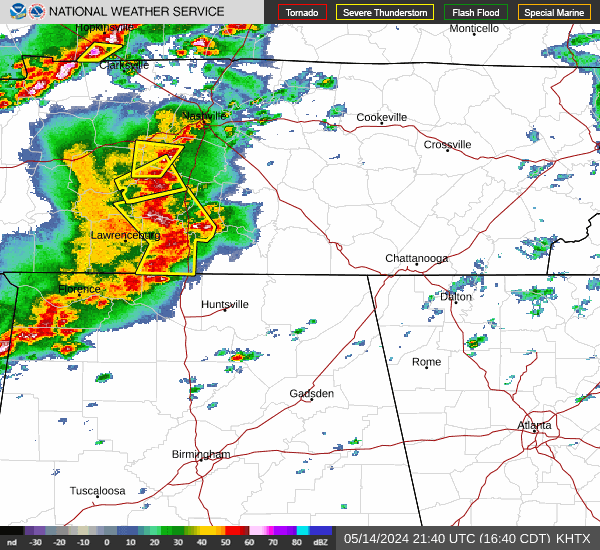
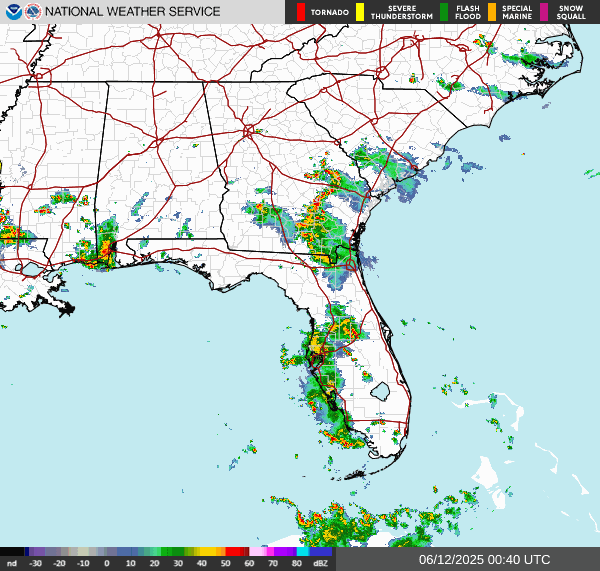






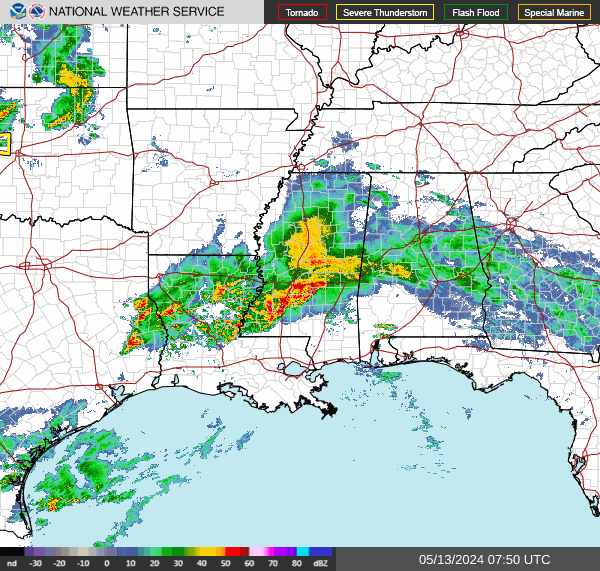
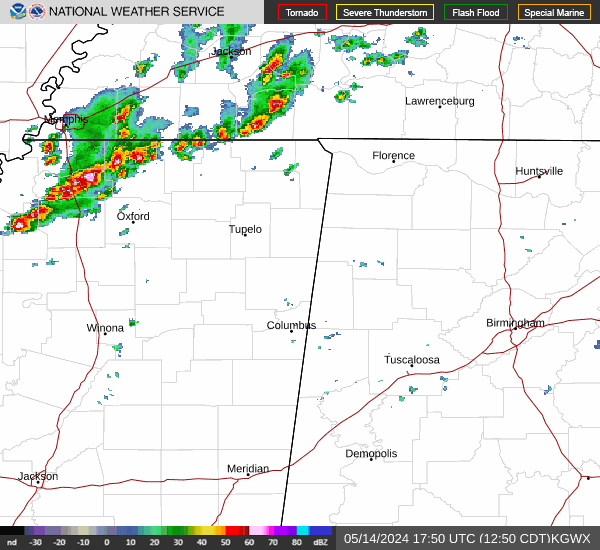
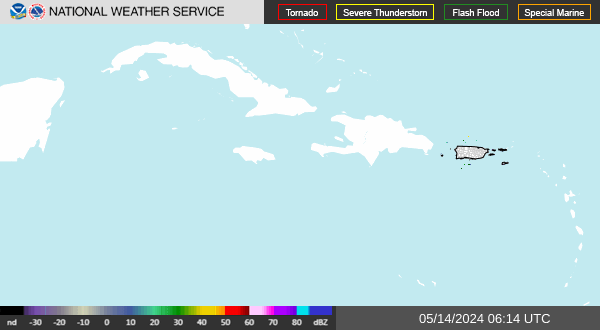



No comments:
Post a Comment